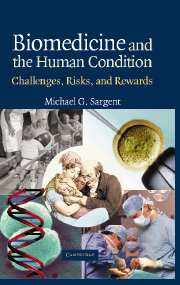Book contents
- Frontmatter
- Contents
- Preface
- 1 Challenges, Risks, and Rewards: Learning to Control Our Biological Fate
- 2 Learning to Breed Successfully
- 3 How Life is Handed On
- 4 Cells in Sickness and Health
- 5 Experiences in Utero Affect Later Life
- 6 Infection, Nutrition, and Poisons: Avoiding an Unhealthy Life
- 7 Signs of Ageing: When Renovation Slows
- 8 Cancer and the Body Plan: A Darwinian Struggle
- 9 Fighting Infection
- 10 Are Devastating Epidemics Still Possible?
- 11 Discovering Medicines: Infinite Variety through Chemistry
- 12 Protein Medicines from Gene Technology
- 13 Refurbishing the Body
- 14 Living with the Genetic Legacy
- 15 Epilogue: Signposts to “Wonderland”
- References
- Index
11 - Discovering Medicines: Infinite Variety through Chemistry
Published online by Cambridge University Press: 06 August 2009
- Frontmatter
- Contents
- Preface
- 1 Challenges, Risks, and Rewards: Learning to Control Our Biological Fate
- 2 Learning to Breed Successfully
- 3 How Life is Handed On
- 4 Cells in Sickness and Health
- 5 Experiences in Utero Affect Later Life
- 6 Infection, Nutrition, and Poisons: Avoiding an Unhealthy Life
- 7 Signs of Ageing: When Renovation Slows
- 8 Cancer and the Body Plan: A Darwinian Struggle
- 9 Fighting Infection
- 10 Are Devastating Epidemics Still Possible?
- 11 Discovering Medicines: Infinite Variety through Chemistry
- 12 Protein Medicines from Gene Technology
- 13 Refurbishing the Body
- 14 Living with the Genetic Legacy
- 15 Epilogue: Signposts to “Wonderland”
- References
- Index
Summary
The strangely audacious notion that human sickness could be cured with concoctions made from natural products existed in most ancient civilisations. This fantastic dream began to come true in the twentieth century, as chemistry and pharmacology were harnessed to make reproducibly effective versions of folk medicines. Prospects for discovering useful drugs greatly improved with the discovery of the first antibiotics and the realisation that these were representatives of a chemical universe of hitherto unimagined richness containing molecules of extraordinary biological potency. With inspiration from nature and growing sophistication, synthetic chemists have learnt how to generate vast libraries of chemicals, which the drug discovery industry screens for useful medicines. We will consider the prospects of protein medicines in the following chapter.
The Power of Chemistry
Experimentation with the physiological effects of natural products must be as old as human civilisation. Alcohol, narcotics, mind-affecting drugs, poisons, and many other natural products with pharmacological effects were widely known in ancient times. More puzzling, though, is why the ancients thought these products might cure human sickness. The ancient Egyptian Ebers' papyrus lists many medicines; whether they were efficacious we shall never know, but the betting must surely be not. One offering contains human excrement! The puritanical Hebrews, who would have known the Egyptian predilection for medicine, seemed to reject this kind of hocus-pocus along with alcohol.
- Type
- Chapter
- Information
- Biomedicine and the Human ConditionChallenges, Risks, and Rewards, pp. 220 - 243Publisher: Cambridge University PressPrint publication year: 2005



